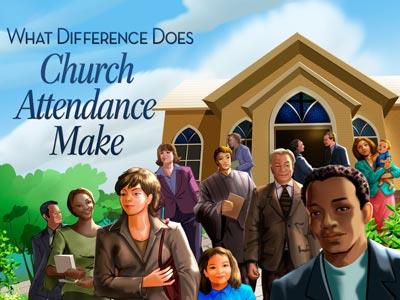-
The Church Of The New Testament - Part 1 Series
Contributed by Sam Mccormick on Feb 6, 2018 (message contributor)
Summary: Part 1 - Introduction to a 13-part series on the origin, functioning, authority, and problems of the church of the first century; and the question of whether--or in what ways--we are to be like the earliest Christians.
This 13-part series of classes has been many years in the making. About 25 years ago I began in earnest to examine the features, character and characteristics of the church as it existed in its earliest years. As I sometimes do, I kept my notes all along the way, and this series of classes is to a large extent the product of those years of on-and-off studying the subject. Several things in my experience contributed to my interest in making this 25-year study which I will mention along the way, and those go much further back.
There may be some difficulty in using the individual parts of this series separately, although viewer are free to do so if it serves their purposes. But to those whose interest is in knowing what the church was like in its earliest years, I recommend starting with Part 1 - Introduction to the Church of the New Testament and proceeding through the parts consecutively.
I have prepared some slides that I used in presenting the series in a classroom setting before adapting it to use as sermons. I have left my cues to advance slides or activate animations in the notes as posted on Sermon Central. If anyone is interested in having the PowerPoint files with the slides, I will be happy to send them. Send me an Email at sam@srmccormick.net and specify what part(s) you are requesting. Be sure that the word “slide” appears in the subject line. It may take me several days to respond, but I will respond to all requests.
THE CHURCH OF THE NEW TESTAMENT
OUTLINE OF THE STUDY
I. Introduction
II. The Origin of the Church
III. What is the church?
IV. The First Christians
V. Authority in the First Century Church
VI. Problems in the New Testament Church
VII. How the Church Functioned
A. Introduction to Functions
B. Apostles, Prophets, and Teachers
C. False Apostles, Prophets, and Teachers & Various Gifts and Functions
D. More Gifts and Functions
E. Evangelists, Preachers, and Ministers, Servants and Deacons
F. Pastors, Elders, Bishops, etc.
VIII. How the Church Worshiped
===================================
I. Introduction to the Church of the New Testament
Sometime over 50 years ago, I was with Robin’s parents at their home in Amherst, Texas when a call came in inquiring about the little church in their town. A woman asked, “Is this a loyal Church of Christ?” If I had been asked that question, I suppose I would have answered, “Yes, this is a loyal church,” rather than saying, “No, we are a disloyal church. We are unfaithful and in apostasy.”
But I have often thought about that phone call, and wondered what the woman intended to ask--and what distinction, in her thinking, would have validated the church in Amherst as a “loyal” church. Loyal to whom, or what? To Christ? No church in that town or this town would declare itself disloyal to Christ, although perhaps some would declare that about others. Loyal to some particular method, practice or arrangement of things? Surely she had some beliefs or practices in mind that served as her standard for determining loyalty.
Today, I will ask far more questions than I will attempt to answer, to introduce the difficulties involved in this subject, and why it is so hard, if possible at all, to get agreement on what matters and what doesn’t.
1. What is a “loyal” church? The question contains an implied premise that being faithful and true to something is essential to loyalty What is the premise that determines loyalty?
Some call the church in Smyrna “the loyal church” because it was the one church of the seven written to in Revelation for which no criticism or correction was needed. But we know almost nothing about the church in Smyrna except that
• they were rich--their poverty notwithstanding
• they were slandered by some people in Smyrna who were described as “a synagogue of Satan,”
• persecution was about to begin.
That’s all we know. If that handful of things is true of us, does our compliance with the sterling example of Smyrna make us “the church of the New Testament?”
I found that there is, and has been for a very long time, a belief that “loyalty,”or faithfulness, lies in conforming to the “ancient paths,” which means sticking as closely as possible to the early church’s practices and methods. Since the church had its beginning under the direct instruction, training, and oversight of the apostles, who clearly had the authority to direct the affairs of the churches, the church must have at first been pure in doctrine and practice. Under this doctrine, the early church is believed to be the model, or pattern. Therefore, the more closely we adhere to that “ideal,” the more loyal we are believed to be, and thus more pleasing to God than churches - and the members who populate them - whose practices are less in conformity.

 Sermon Central
Sermon Central



